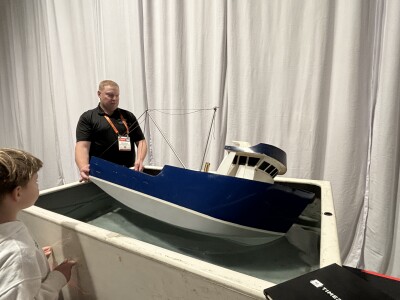Working on the breakwater of the fishermen’s harbor in Pictou, Nova Scotia, Ben Anderson cuts the twine out of rim-racked gaspereau gillnet. “It got hooked up when I was setting it, and I didn’t stop it in time,” Anderson says. “Fortunately, I have another one at the house, so I’ll put that one on. We sometimes get a good run of gaspereau in late May.”
Anderson’s boat, the Just Splashy, a 44-foot, 11-inch fiberglass vessel, rigged for gillnetting, is tied to a float just inside the breakwater. “I just took the crab gear off,” says Anderson. “I had her decked over, had the spar on and the boom, it looked great.”
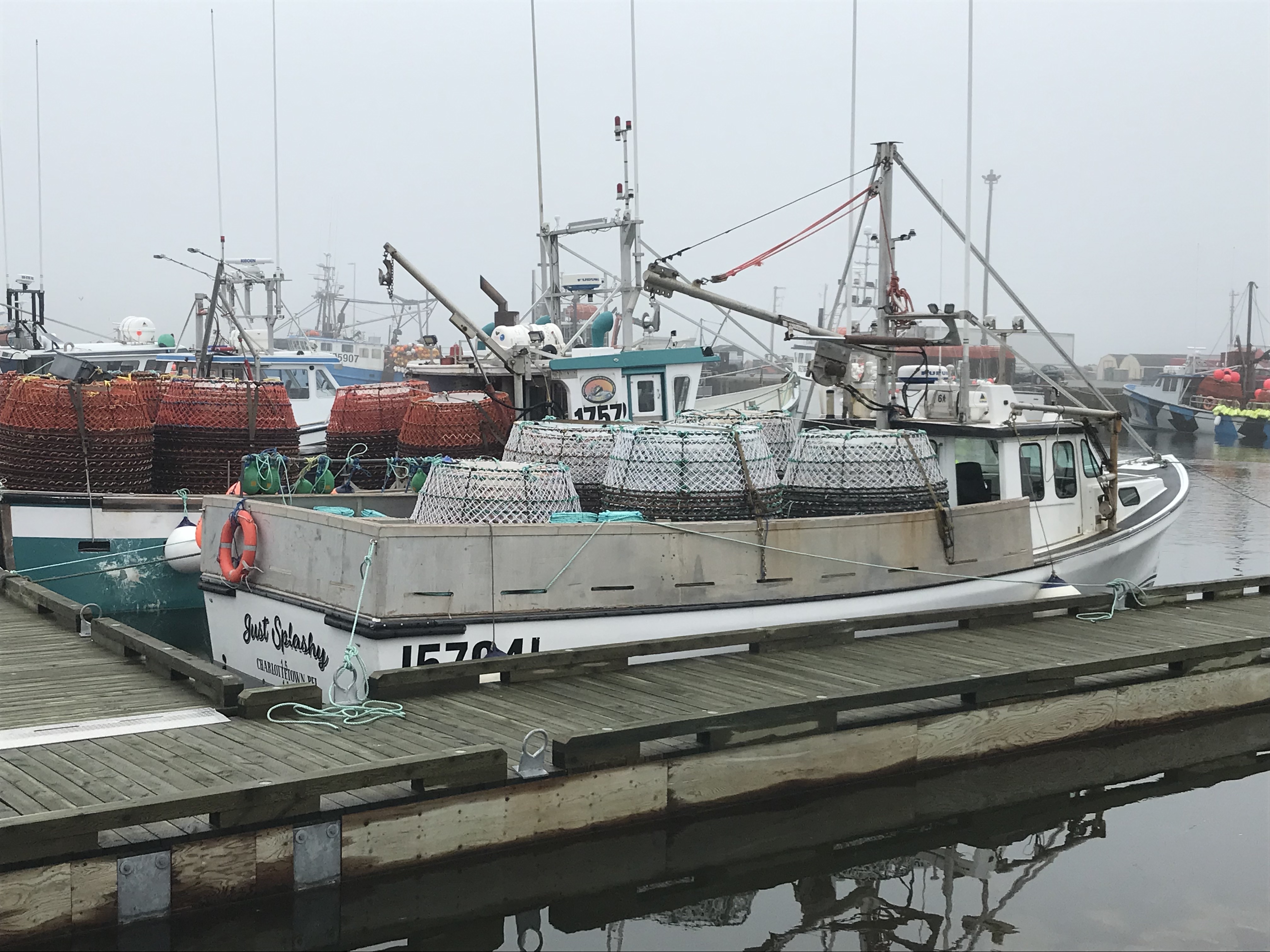
Even without the crab gear, the Just Splashy looks great. Built in 1998 at the Hutt Brothers yard in Alberton, Prince Edward Island, the boat has the flared bow and reverse sweeping sheer typical of PEI boats. At 14 feet wide, Anderson’s boat seems a lot less beamy than newer boats, but with the wheelhouse forward—another trait of PEI boats—he has plenty of deck space. “And she moves right along,” says Anderson. “She’ll do 22 knots. And she’s good in rough weather. I had her out last year, it was blowing 40, seas about 12 feet, and she handled it. And she draws less than two feet, so she’s good inside too.”
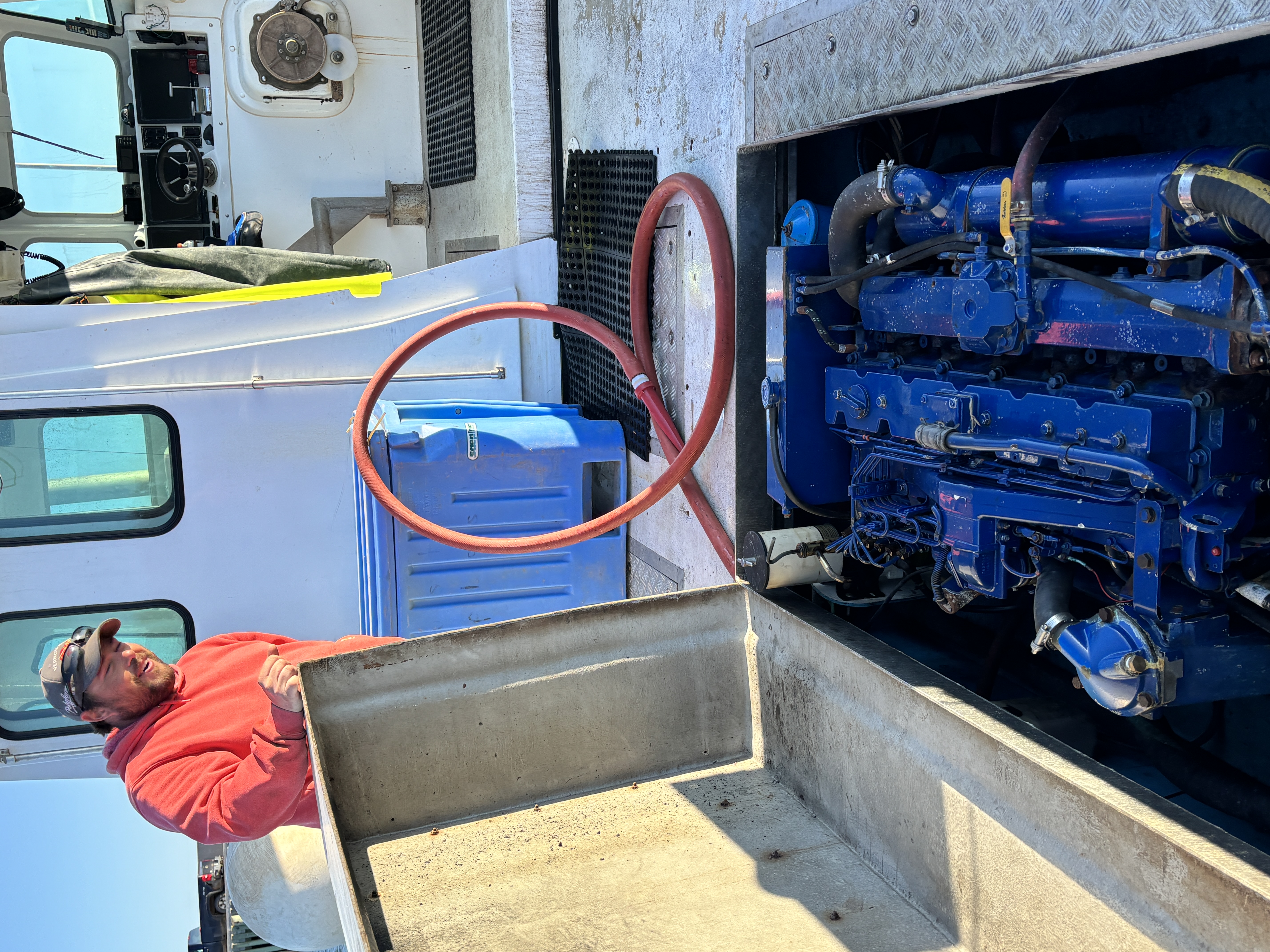
Anderson runs an 8.3-liter, C series 430-hp Cummins for power. “Old style, mechanical. I’m not ready for that electric yet; those common rail injectors cost $2700 each. I told my father, I’m going to get another one of these Cummins, and when the time comes, I’ll take this one out and have it rebuilt and just keep swapping them out for my lifetime.”
The Cummins turns a ZF301 gear at 2.69:1, with a 2-inch shaft making a short run to a 28x34 ZF propeller with a #5 cup. With the engine box amidships on deck, and the short run of the power train, repowering should be a snap.
Versatility is the name of the game with small boats. Besides fishing 50 traps for snow crab in the early spring and chasing gaspereaux for bait in May, Anderson fishes for lobster in Area 25 in late summer. “I fish square wooden traps,” he says. “I pour concrete into them for weight. Dry, they weigh about 90 pounds, about 130 wet.” Anderson fishes pairs, so he can leave them on the rail. “Last year we did well,” he says. “I had 62,000 in two months. That’s with 225 traps, all you need.”
After the lobster run is over, Anderson sometimes gillnets herring. “We’re allowed 15,000 pounds a day,” he says. “We deck over for that.” Anderson bolts a deck onto the rails of his boat and puts a temporary bulwark around it. He puts a bulkhead just aft of the wheelhouse and another near the stern that leaves room to access the scuppers aft. As he describes it, he hangs his gillnets so that the fish shake out easily into the center of the deck. “We have a hatch and we just run’m right down into boxes,” he says.
In the winter, Anderson rigs over for scallops. “I fish Digby rock drags 11 baskets on an 18-foot bar,” he says. “I’ve got all kinds of rigging, the spar, an A-frame, the decking, and a wall to protect the crew and an awning.”
In early spring, Anderson decks the boat over again and puts on his mast, boom, and crab block. I have quick snap hydraulic hoses, so I disconnect the hauler, and I have other hoses I run up to the crab block.” With everything ready, he loads up his crab gear—50, 6-foot diameter conical pots that nest on deck, plus rope and buoys—and heads north to Cheticamp, on Cape Breton Island. “Last year, one of the Native boats fishing up there rolled over. They left the dock all loaded with traps and got out there, iced up, and rolled over. Two of them made it out of four. So, this year I had a stability test done with all my gear on. It was expensive, but I don’t want to take that risk.”
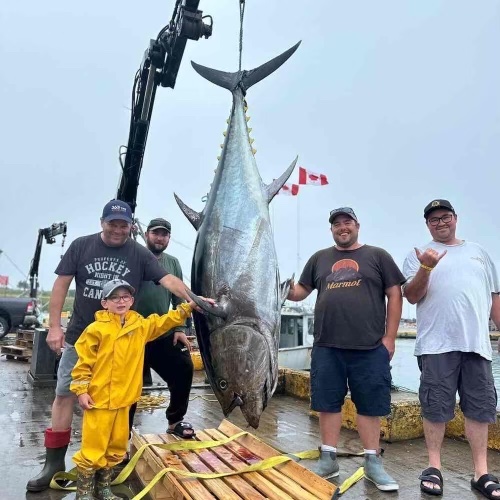
Besides all that, Anderson also longlines for halibut in the spring and fishes for tuna in the summer. “We had a bad year for halibut last year,” he says. “It was just a one-day season, and we had 400 pounds. Two boats, just ten miles north of me, had 10,000 and 12,000 pounds for the day. For tuna, we just get one or two.”
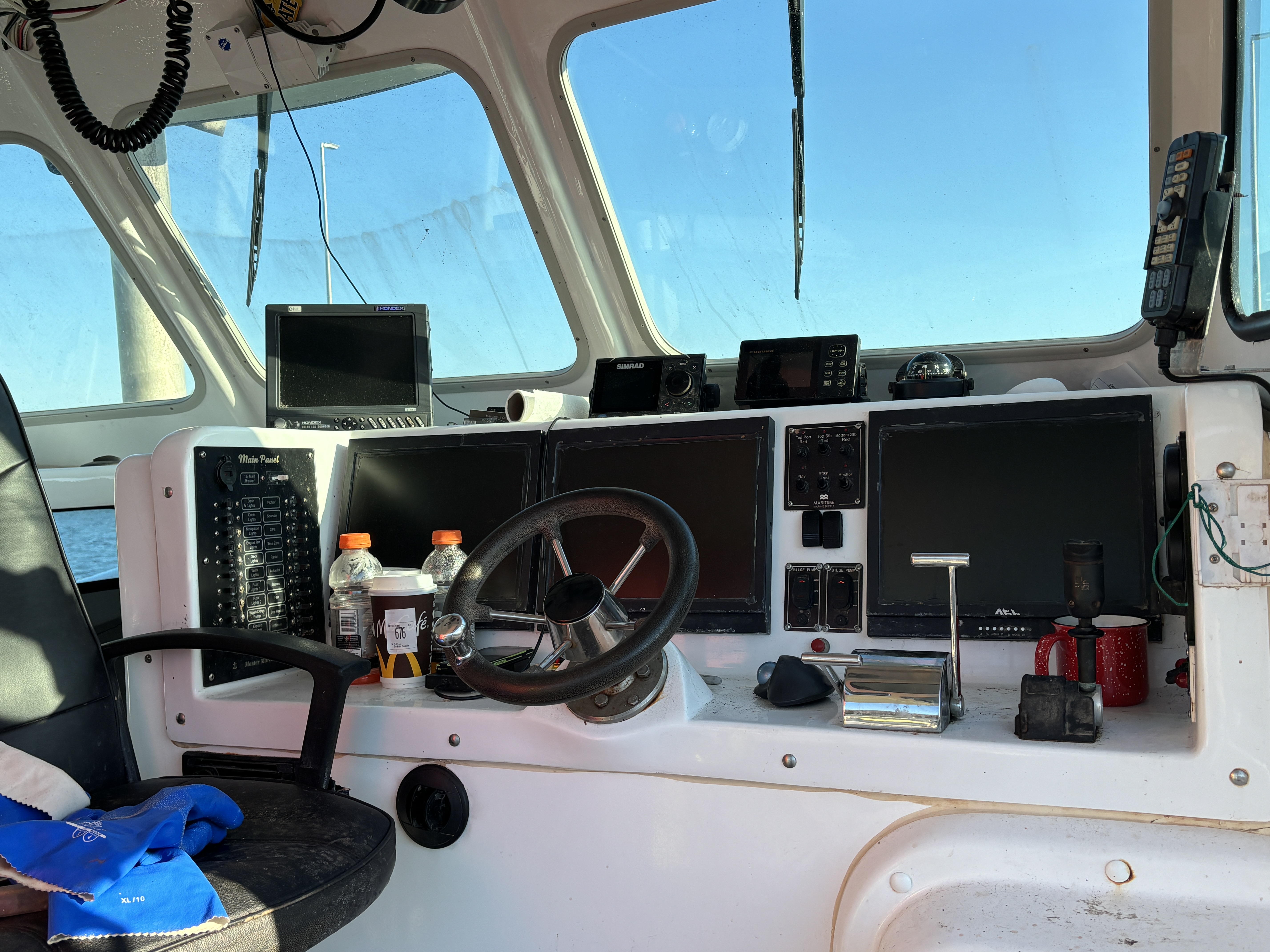
Anderson operates with a fairly simple electronics package: Furuno radar, Hondex plotter and sounder, and TimeZero. His hydraulic system runs off the front end of the Cummins and powers a Hall and Stanley hauler. “For crab, I can just unsnap the lines and hook them to my HSS crab hauler,” he says.
He usually runs with a crew of two or three besides himself. “When we’re fishing for crab, we leave the boat in Cheticamp. It’s a 3-hour drive down there, then steam out 4.5 hours, 13 knots up the shore. We’re out there about 29 miles east of the Maggies [Magdeline Islands] and about 5 hours southwest of Port aux Basques, Newfoundland. We fish for around seven hours unless we have to move gear. Coming back, we’re usually loaded, so we go about 10 knots. It makes for a long day, 22-24 hours, the longest was 32 hours.”
The Just Splashy has three bunks and a diesel stove down forward for the crew and captain to take turns sleeping. “That stove gets used too, let me tell you—when we go for crab. And we cook on it too.”
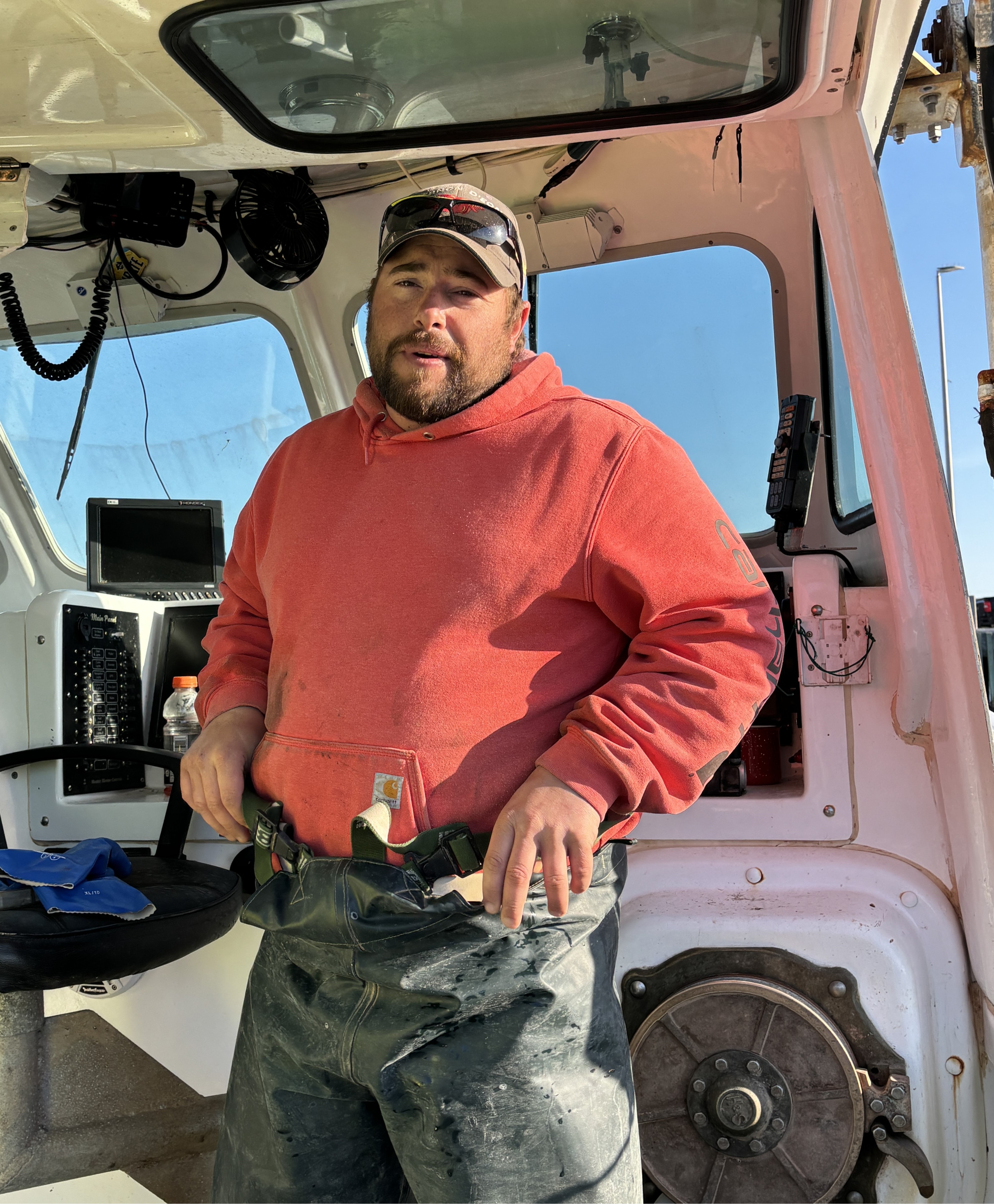
Now 31 years old, Anderson bought his first boat and his herring and mackerel license when he was 20 years old. “I bought my lobster permit when I was 23. Back then, a lobster permit was $300,000 (Canadian),” he says, noting that he almost has it paid off. “I look around at the guys I went to school with, and I don’t see a lot of them getting into fishing. I’m one of the youngest guys here. But I love it.” Anderson had the advantage of growing up in a fishing family—his father fishes, as did his grandfathers going back a few generations—and he plans on making a life of it, and maybe a life with the Just Splashy too.
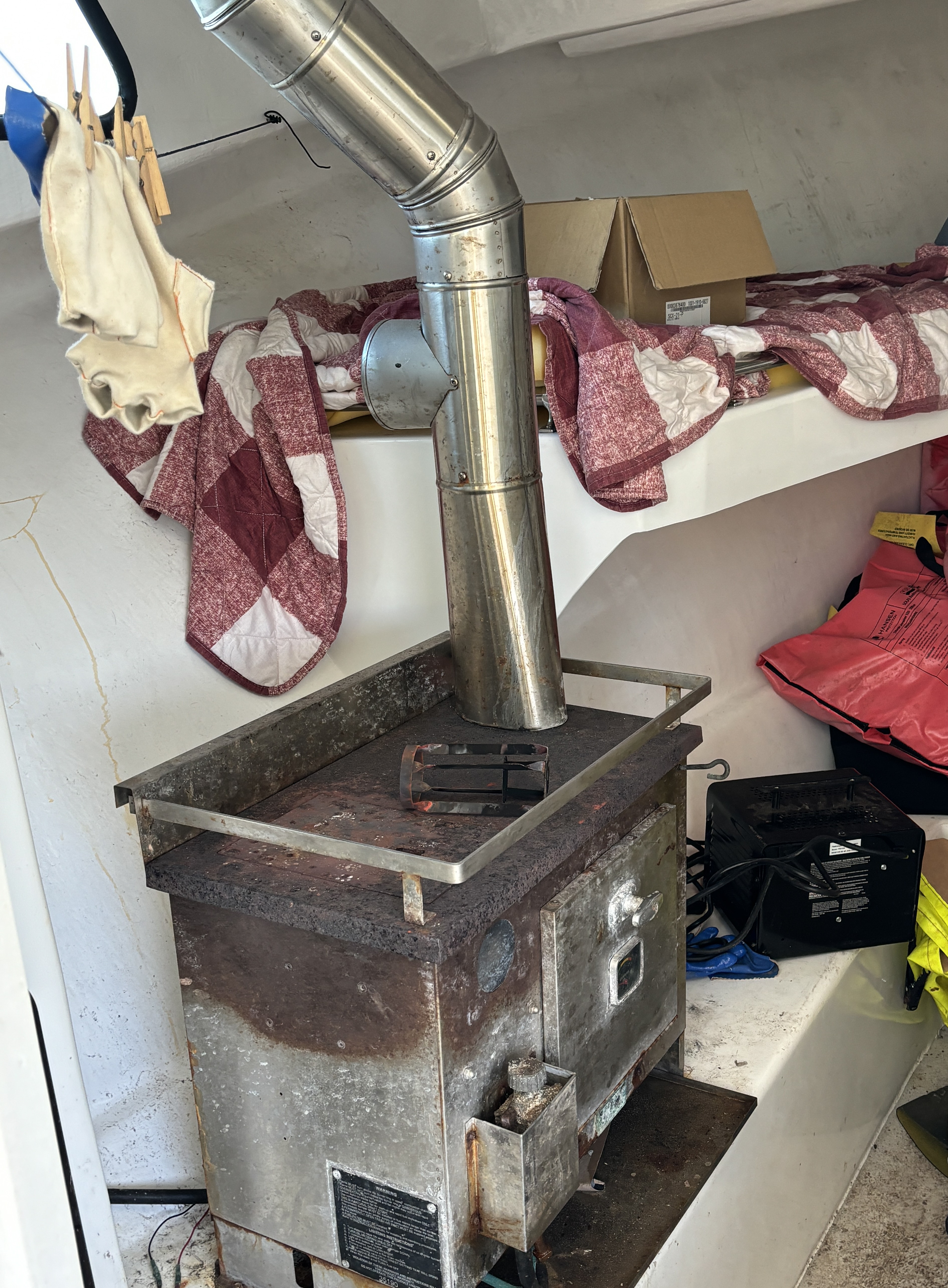
Boat Specifications:
- Name of Boat: Just Splashy
- Home Port: Pictou, Nova Scotia (registered in Charlottetown, PEI)
- Owner: Ben Anderson
- Builder: Hutt Brothers, Alberton, PEI
- Hull Material: Fiberglass
- Year built: 1998
- Fisheries: Snow crab, gaspereau, lobster, herring, scallops
- Length: 44 feet, 11 inches
- Beam: Original: 14 feet
- Draft: 2-3 feet depending on load
- Engine: Cummins 420 mechanical
- Power Train: ZF 301 @2.69:1. 2-inch stainless shaft, 28x34 ZF propeller #5 cup
- Fuel Capacity: 400 gallons
- Top Speed: 22 knots
- Cruise: 17 knots
- Hold capacity: Around 17,000 pounds of crab, or 15,000 pounds of herring on deck.
- Deck Equipment: Hall & Stafford hauler for lobster, HSS hauler for crab
- Crew accommodations: Three bunks in the fo’c’sle with a diesel stove or heat and cooking.
- Electronics: Furuno radar, Hondex plotter and sounder, TimeZero, Simrad autopilot, and Furuno GPS.







